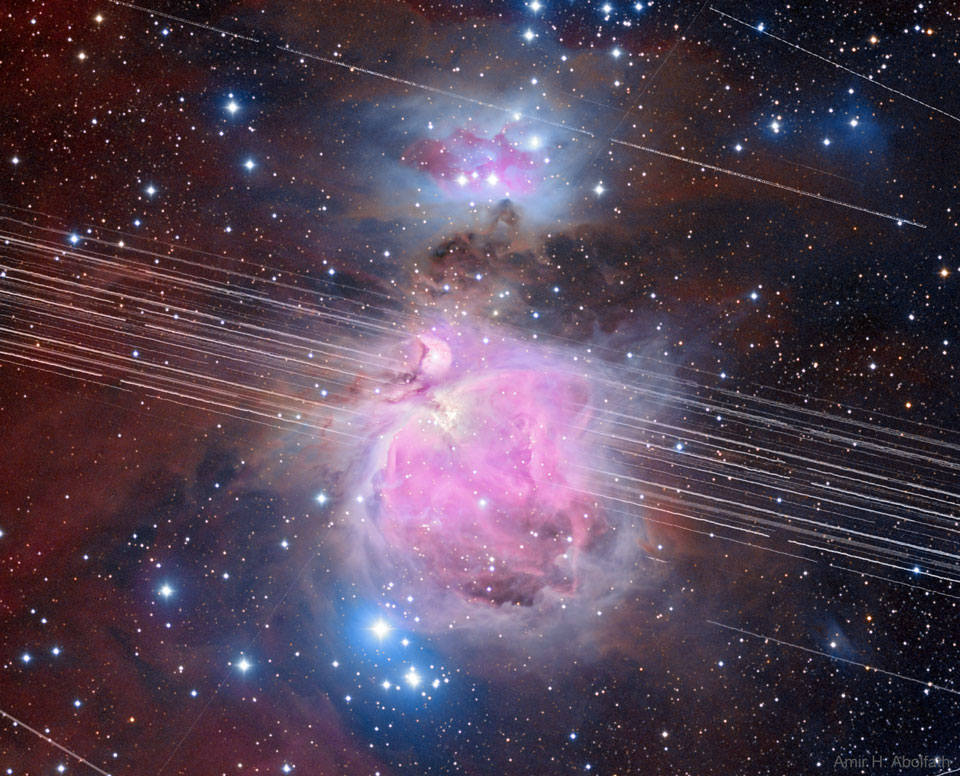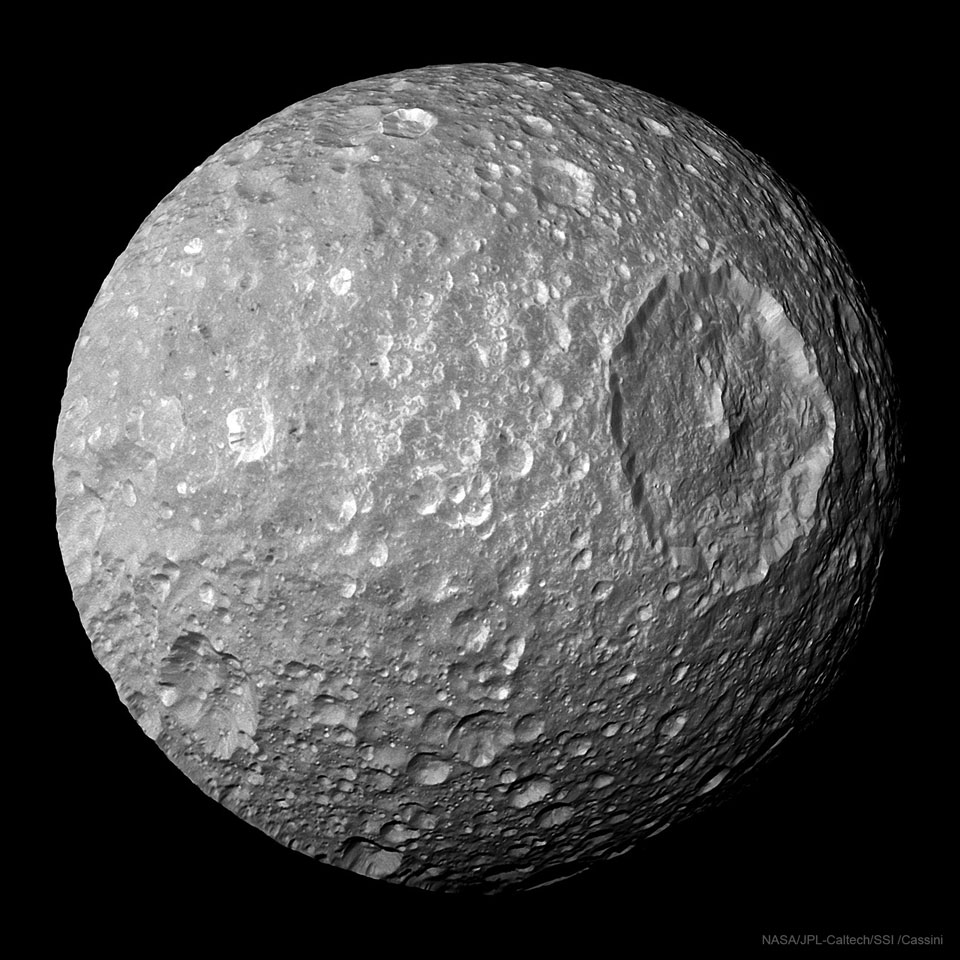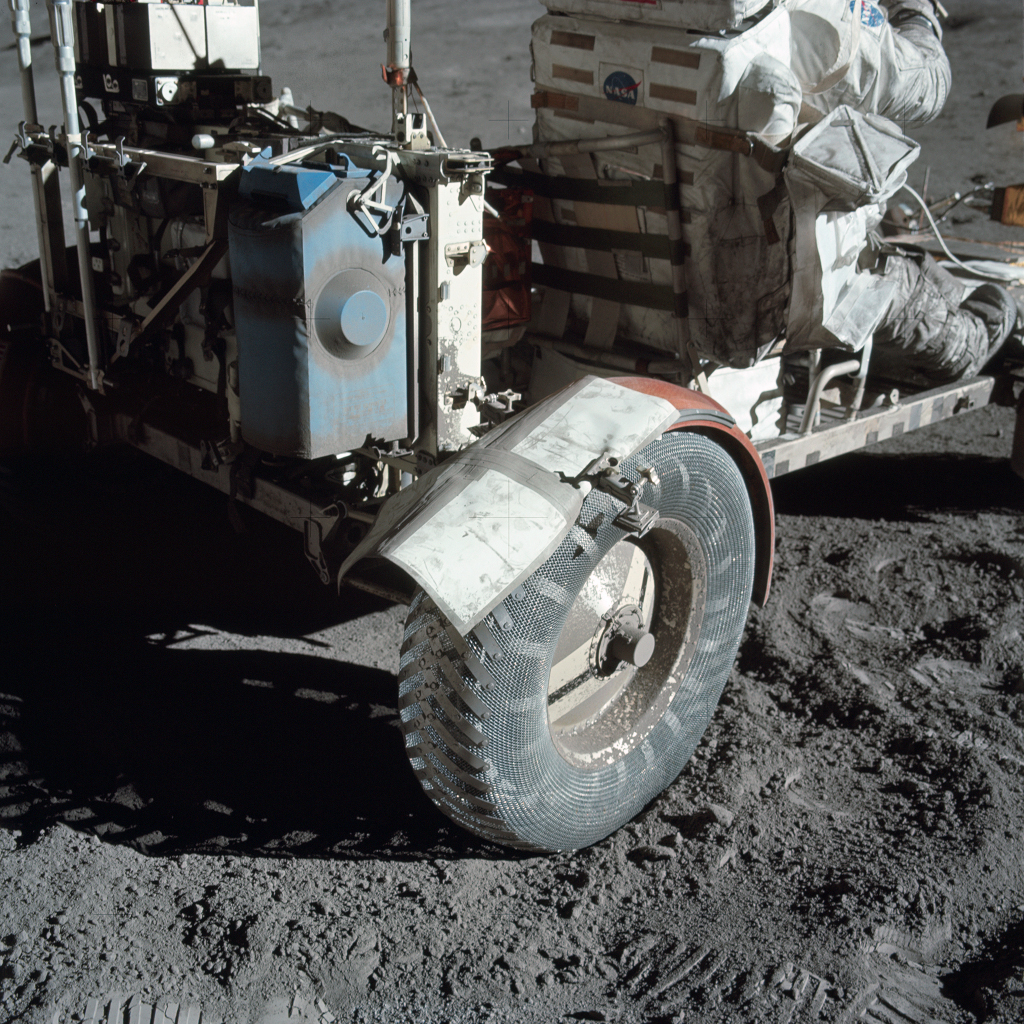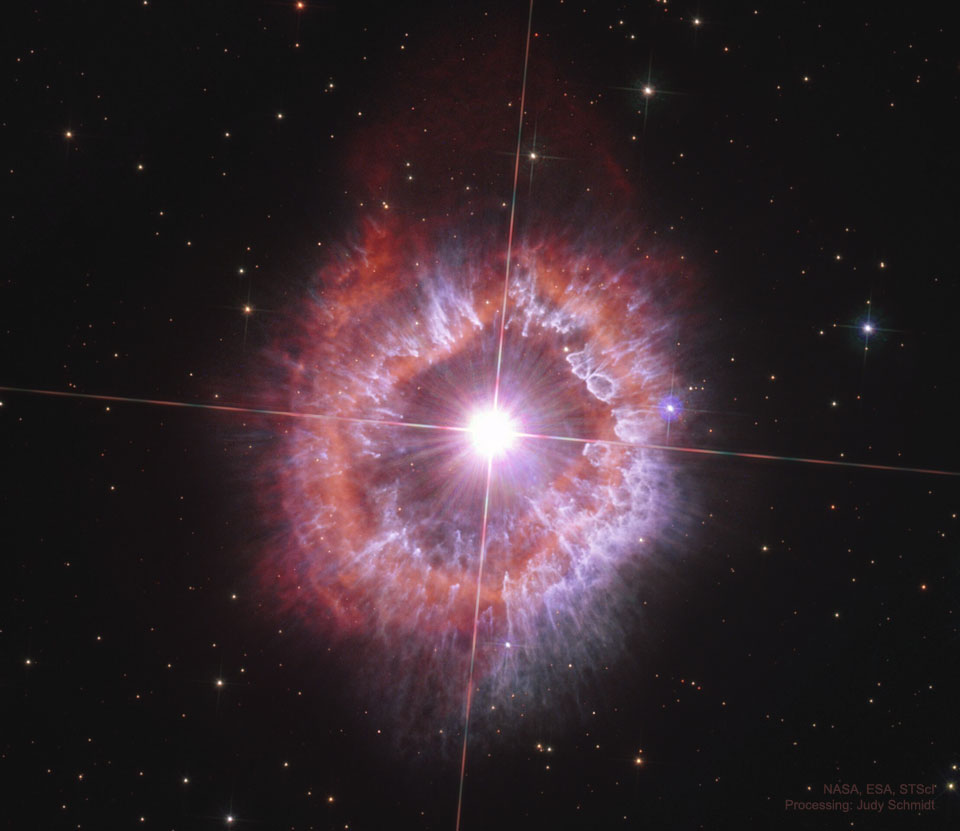Nombre total de pages vues
02/06/2021
01/06/2021
ASTRONOMY - Starlink over Orion
2021 June 1
Image Credit: Amir H. Abolfath
Explanation: What are those streaks across Orion? Most are reflections of sunlight from numerous Earth-orbiting Starlink satellites. Appearing by eye as a series of successive points floating across a twilight sky, the increasing number of SpaceX Starlink communication satellites are causing concern among many astronomers. On the positive side, Starlink and similar constellations make the post-sunset sky more dynamic, satellite-based global communications faster, and help provide digital services to currently underserved rural areas. On the negative side, though, these low Earth-orbit satellites make some deep astronomical imaging programs more difficult, in particular observing programs that need images taken just after sunset and just before dawn. Planned future satellite arrays that function in higher orbits may impact investigations of the deep universe planned for large ground-based telescopes at any time during the night. The featured picture, taken in 2019 December, is a digital combination of over 65 3-minutes exposures, with some images taken to highlight the background Orion Nebula, while others to feature the passing satellites.
31/05/2021
I-PHONE ASTUCES - Secouez-moi...
ASTRONOMY - Mimas: Small Moon with a Big Crater
2021 May 31
Image Credit & Copyright: NASA, JPL-Caltech, Space Science Institute, Cassini
Explanation: Whatever hit Mimas nearly destroyed it. What remains is one of the largest impact craters on one of Saturn's smallest round moons. Analysis indicates that a slightly larger impact would have destroyed Mimas entirely. The huge crater, named Herschel after the 1789 discoverer of Mimas, Sir William Herschel, spans about 130 kilometers and is featured here. Mimas' low mass produces a surface gravity just strong enough to create a spherical body but weak enough to allow such relatively large surface features. Mimas is made of mostly water ice with a smattering of rock - so it is accurately described as a big dirty snowball. The featured image was taken during the closest-ever flyby of the robot spacecraft Cassini past Mimas in 2010 while in orbit around Saturn.
30/05/2021
29/05/2021
OVNIS - Des ovnis harcelant un navire de l’US Navy filmés sur un écran radar
ASTRONOMY - Lunar Dust and Duct Tape
2021 May 29
Image Credit: Apollo 17, NASA
Explanation: Why is the Moon so dusty? On Earth, rocks are weathered by wind and water, creating soil and sand. On the Moon, the history of constant micrometeorite bombardment has blasted away at the rocky surface creating a layer of powdery lunar soil or regolith. For the Apollo astronauts and their equipment, the pervasive, fine, gritty dust was definitely a problem. On the lunar surface in December 1972, Apollo 17 astronauts Harrison Schmitt and Eugene Cernan needed to repair one of their rover's fenders in an effort to keep the rooster tails of dust away from themselves and their gear. This picture reveals the wheel and fender of their dust covered rover along with the ingenious application of spare maps, clamps, and a grey strip of "duct tape".
27/05/2021
SANTE/MEDECINE - Attestation de vaccination
Si vous été vacciné contre la Covid-19 récemment, on vous a en principe donné à l'issue de l'injection une attestation imprimée comportant plusieurs informations (nom et prénom, type de vaccin, date de la première injection, etc.) ainsi qu'un QR Code. Code que vous pouvez utiliser pour enregistrer l'attestation dans le carnet de tests de l'application TousAntiCovid, qui centralise également les certificats de tests de dépistage. L'attestation de vaccination sera notamment utile pour le Pass sanitaire, ce "passeport" que le Gouvernement a décidé de mettre place à compter du 9 juin 2021, date de réouverture de nombreux établissements recevant du public, et qui permettra à la fois d'accéder à des manifestations et des événements regroupant plus de 1 000 personnes (spectacles, festivals, rencontres sportives, parcs à thèmes, foires, salons, etc.) et à faciliter le passage des frontières, pour les voyages professionnels ou les vacances (pour en savoir plus sur le Pass sanitaire, consultez la page de questions-réponses sur le site Web du Gouvernement).
ASTRONOMY - The Outburst Clouds of Star AG Car
2021 May 26
Image Credit: NASA, ESA, STScI; Processing: Judy Schmidt; Text: Anders Nyholm
Explanation: What created these unusual clouds? At the center of this 2021 Hubble image, processed by Judy Schmidt, sits AG Carinae, a supergiant star located about 20,000 light-years away in the southern constellation Carina. The star's emitted power is over a million times that of the Sun, making AG Carinae one of the most luminous stars in our Milky Way galaxy. AG Carinae and its neighbor Eta Carinae belong to the scarce Luminous Blue Variable (LBV) class of stars, known for their rare but violent eruptions. The nebula that surrounds AG Car is interpreted as a remnant of one or more such outbursts. This nebula measures 5 light-years across, is estimated to contain about 10 solar masses of gas, and to be at least 10,000 years old. This Hubble image, taken to commemorate Hubble's 31st launch anniversary, is the first to capture the whole nebula, offering a new perspective on its structure and dust content. The LBVs represent a late and short stage in the lives of some supergiant stars, but explaining their restlessness remains a challenge to humanity's understanding of how massive stars work.
SANTé/MEDECINE - LA GUERISON DU CANCER : Un espoir immense - La troisième voie -2/7-
Reprogrammer le cancer, fantasme ou réalité scientifique ? Oui, cancer. Le mot qui crispe, le monstre tentaculaire qui hante les statistique...

-
2022 September 26 All the Water on Planet Earth Illustration Credit: Jack Cook, Adam Nieman, Woods Hole Oceanographic Institution ; Data ...
-
2025 January 14 North Star: Polaris and Surrounding Dust Image Credit & Copyright: Davide Coverta Explanation: Why is Polaris called ...






